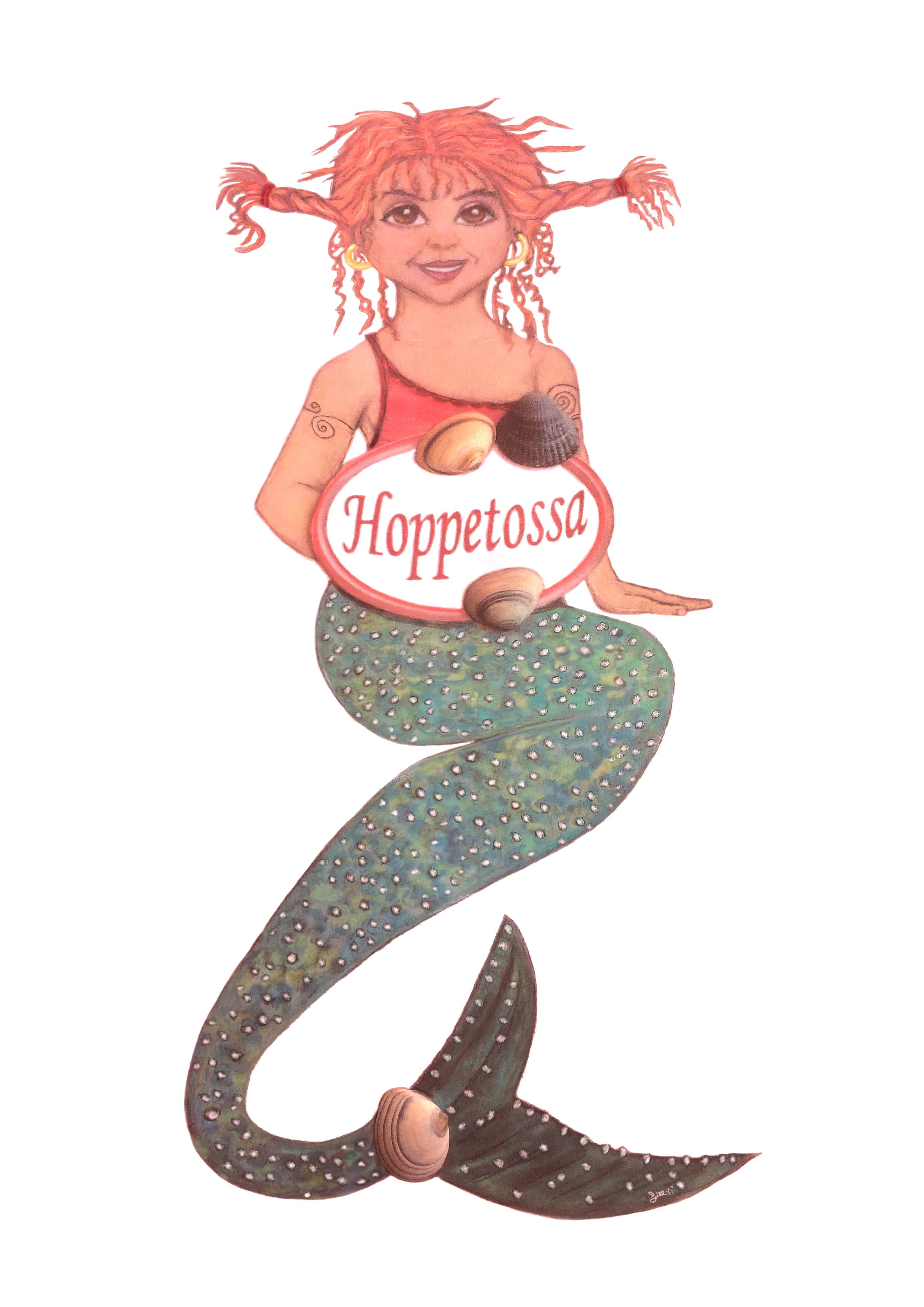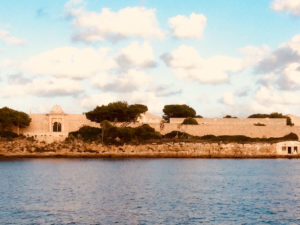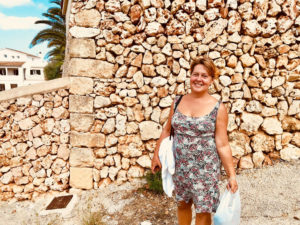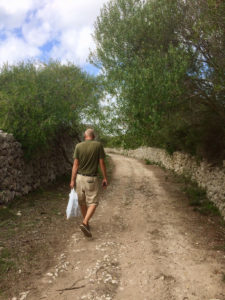The Balearics
We waved goodbye to our friends in Altea and set out for the Balearics, sailing through the night, passing Ibiza at dawn and arriving in Rapita harbour, Mallorca around noon..

The Balearics are the spanish archipelago in the western part of the Mediterrenean. The four largest islands are Mallorca, Menorca, Ibiza, and Formentera with many minor islands and islets; Cabrera, Dragonera, and S’Espalmador…..The four major islands are all wellknown and popular tourist destinations and Ibiza, in particular, is known as an international party destination, attracting many of the world’s most popular DJs to its nightclubs.🕺💃
The two largest islands,Mallorca (Majorca “the big”) and Menorca (Minorca “the small”), are called the Gymnesium islands. According to one story the name comes from the Greek gymnos, meaning naked, because its inhabitants were often nude! It’s a warm climate😊
The islands of Ibiza (Catalan: Eivissa), Formentera, S’Espalmador and the other small islets are called the Pityusic islands from the greek pitýa that means pine tree. Both Catalan and Spanish are official languages on the islands.
Not much is known about the first inhabitants of these islands but there are a lot of legends! One source says that shipwrecked greeks was the first that settled here while another tradition tell the story of survivors from the Trojan war around 1180 BC. Whoever they were, they were so famous for their skill with the sling, a weapon that they are said to have invented, that they served as favored mercenaries both with the Carthaginians and the Romans.

A lot of conquerors have been here; the Phoenicians, the Romans, the Vandals, the Byzantines, the Crusaders, the Berbers, the Moors, the French, the English….. And they have all left their marks. Even the Swedish Viking King Björn Järnsida (Ironside)and his brother Hastein was here creating havoc sometime around 860!
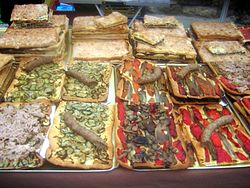
The cuisine of the islands is Catalan, Spanish or Mediterranean. It is much pastry, cheese, wine, pork and seafood. Sobrassada is a local pork sausage. Lobster stew from Menorca, is one of their most well-sought after dishes and Mayonnaise is said to originate from the Menorcan city of Maó (Mahon). And of course there’s a lot of local pastries😋
Mallorca, Sa Rapita
Sa Rapita is situated on the south side of Mallorca about 40 km east of Palma, the capital city of the island. The village was once a stronghold against pirate attacks and the watch tower of Son Duri still stands in the port of the marina. It was one of many towers along the coast that lit their fires to warn Palma against the attacks from the sea.
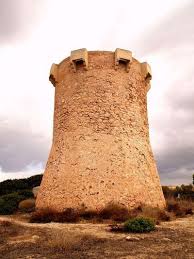
Sa Rapita is not considered a holiday destination, it’s mostly locals that find their way here. One of the best known beaches of Mallorca, Es Trenc, is close by though, with more than three km of white sand and clear blue water. Part of this beach is set aside for naturalists so the Greek story about the nude inhabitants is probably correct after all!😉
The marina was quite full when we arrived so we had to lie alongside another ship. It was a nice marina but we thought it was too expensive with 88 Euro per night, so the next day we decided to search for a place to go for anchor.
The further south we have come the more expensive the marinas and, we didn’t know it at the time, it would continue like that.
Mallorca, Porto Colom
We found a very nice and sheltered bay with mooring buoys outside the beautiful fishing village Porto Colom, on the east side of Mallorca, where we stayed for two days. Porto Colom is named after Christopher Columbus who was, allegedely, born here. There’s no real proof for that and other sources name Genoa as his place of birth so…. but maybe he was anchored here in the bay sometime in the 1500:s,who knows!😏
If you enjoy ancient archeology there is a prehistoric ‘naveta’ or burial ground dating back to around 2000 BC nearby the village.
Until the late 19th century Porto Colom was busy supplying wine to France. Then a plague, Phylloxera, erupted in Europe and nearly destroyed every single wine grape in the world! 😨Wineries had to rip up and burn the ancient vineyards in a desperate attempt to stop the disease. In France over 70% of the vines died and the livelihood of thousands of families were just gone! It was a real disaster!
Porto Colom’s role as a port diminished and it has only recently discovered a new life as a peaceful tourist resort.
The disease is caused by a very hungry, microscopic aphid, Phylloxera, that lives on and eats the roots of the grapes. It can infest a vineyard from the soles of your shoes or naturally be spreading from vineyard-to-vineyard by proximity.
What would we do without our wine!? Horrible thought!😰 Some people became so desperate that they started to drink Absinthe instead😝😝
There’s still no way to keep the little bugger away, but in the 1880:s a French winegrower named Leo Laliman came up with the brilliant idea to graft his plants with aphid-resistant American vines, and luckily for us that solved the problem! Thank you Monsieur Laliman!🙏
Still there’s a substantial threat to any vineyard not planted with grafted rootstock. There is only one European grape vine known to be resistant to the Phylloxera. It’s the Assyrtiko vine, which grows on the Greek island of Santorini 😊Maybe we’ll try it next year when we might sail to Greece…
Menorca, Mahon
Next stop was Mahón – or Maó, as it is known locally, Menorca’s lovely capital city💙 The name’s origin is attributed to the Carthaginian general Mago Barca, brother to Hannibal, who is thought to have taken refuge there in 205 BC.
Maó-Mahón has one of the largest natural harbors in the world, 5 km long and up to 900 metres wide. Only Pearl Harbor on Hawaii is bigger. The two official languages are Catalan and Spanish. Natives to the island also speak a variety of Catalan called Menorquí.
Menorca has been occupied many, many times and was twice in British possession during the 18:th century. The thousands of soldiers stationed on the island missed their Gin, poor lads! Some locals then decided to import juniper berries and distill gin using alcohol from local vineyards (making it more akin to brandy) and in time a gin distillery was built. Today, Xoriguer Gin in its distinctive bottles is one of the island’s most famous exports! The local way with gin is to mix it with fizzy lemonade to make a “Pomada”🥃
We like Mahon a lot and felt strangely at home 💙💙it’s a beautiful mix of old and new architecture and the people are very nice and friendly. Many of them are blue eyed and fair skinned, revealing the history of the different occupants on the island during the centuries.
Both Mallorca and Menorca have so many nice places to explore and discover and we would like to come back to spend more time here, but for now we have to leave.
We have by now decided to spend the winter on Sicily and autumn is on it’s way even in this part of the world! The Tramontana, the cold and fierce wind from the north, has started to blow and we must be on our way.
We will sail through the nights and make a brief stop at Sardinia, a trip that will take us about 40 hours….
